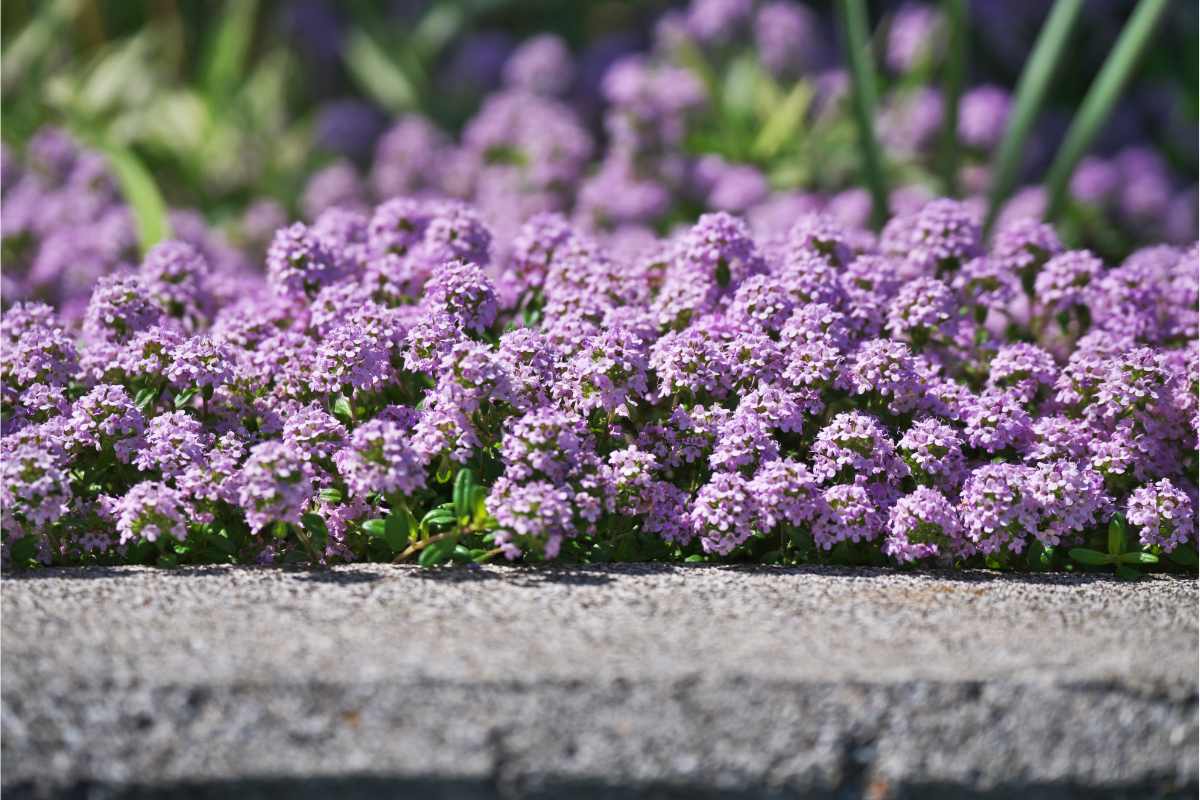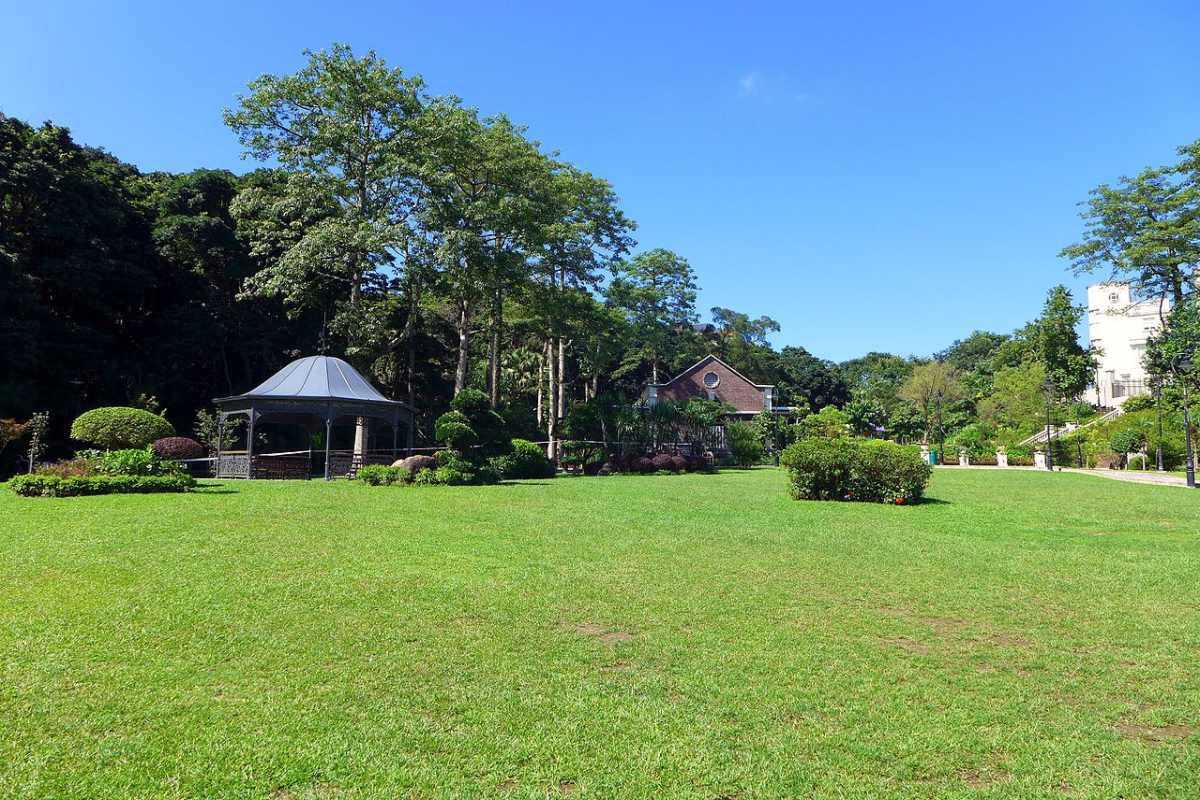
Welcome to Plano, Texas! Here, the scorching months of July and August are famous for their dry and unforgiving conditions. As homeowners face the challenge of conserving valuable water resources while still maintaining their yards, drought-tolerant landscaping offers an ideal solution in Plano.
In this article, we’ll explore various innovative and eco-friendly ideas to transform your Plano yard into a stunning oasis that thrives all year round, even in the harshest summer months.
- What’s a Drought-Tolerant Landscape?
- 1. Use Native Plants
- 2. Reduce Your Lawn’s Size
- 3. Choose Drought-Tolerant Grass Types
- 4. Use Efficient Irrigation Systems
- 5. Consider Xeriscaping
- 6. Harvest Rainwater
- 7. Use Mulch
- 8. Get Creative With Hardscapes
- 9. Install a Rock Garden
- FAQ About Drought-Tolerant Landscaping
What’s a Drought-Tolerant Landscape?
Drought-tolerant landscaping refers to a landscaping design and approach that aims to conserve water and maintain a beautiful landscape even during drought. In Plano, it involves using native plants, trees, and grasses that are well-suited to the region’s dry summers and mild winters as well as incorporating water-efficient irrigation systems and hardscaping features.
1. Use Native Plants
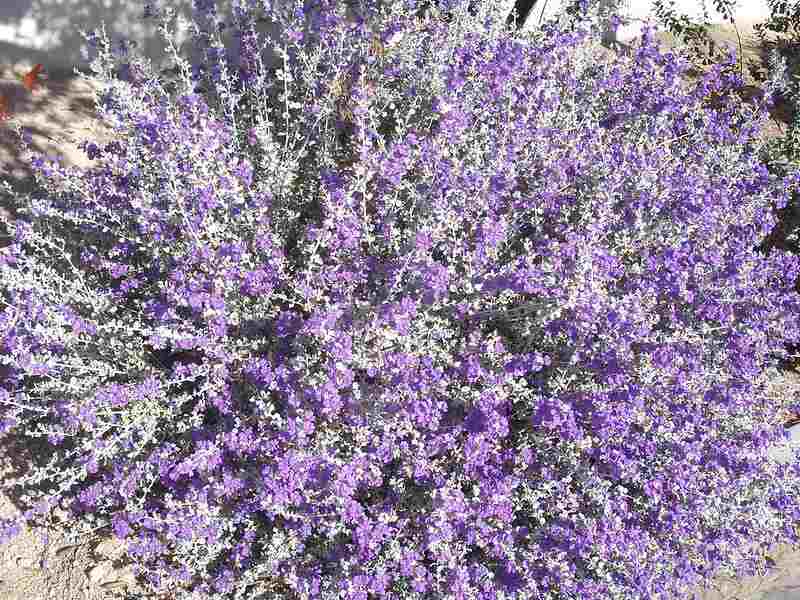
Photo Credit: time anchor / Flickr / CC BY 2.0
Native plants are an excellent option for building a drought-tolerant landscape in Plano. These plants have adapted to the local climate, including the rainfall levels, over thousands of years, making them highly resilient and able to survive under extreme weather conditions.
One of the primary benefits of using native Texas plants in your landscape is that they require less water than non-native species, require less maintenance, and can withstand prolonged periods of drought. And with so many beautiful and diverse native plants available, there’s no need to limit yourself to cacti and succulents.
From flowering shrubs to colorful wildflowers, you can create a stunning and vibrant landscape that’s also environmentally friendly and sustainable. Here are some drought-tolerant plants in Plano, TX:
- Blackfoot daisy
- Turk’s cap
- Texas sage
- Glossy abelia
- Ashe juniper
- Crossvine
2. Reduce Your Lawn’s Size
Reducing your lawn size is a smart move if you’re looking to build a drought-tolerant landscape in Plano, TX. While turf can look lush and inviting, it requires a lot of water to maintain, making it an unsustainable option for regions with limited water resources.
Cutting your lawn down can have many benefits beyond just water conservation. Lawns require significant maintenance, including mowing, fertilizing, and watering, all of which can be time-consuming and costly. By reducing the size of your lawn, you can also save time and money on lawn care.
Fortunately, plenty of alternatives to traditional lawns can be used to create a beautiful and low-maintenance landscape, such as hardscapes, xeriscapes, and rock gardens (we’ll talk more about them soon, don’t worry!). You can also use low-water ground covers, such as:
- Creeping thyme
- Carpet sedum
- Creeping phlox
- Frog fruit
Pro Tip: One of the easiest and least back-breaking ways to remove a part of your lawn is sheet mulching. This process involves layering organic materials such as cardboard, newspaper, leaves, compost, and other materials on the lawn to create a thick mat that suffocates the grass.
3. Choose Drought-Tolerant Grass Types
Suppose you’re not ready to give up on your lawn or simply want to maintain a section of turf in your yard. In that case, choose drought-tolerant grass types to create a drought- tolerant landscape.
Grass types with a high drought tolerance require less water than other turf grasses and can survive even during times with almost no rainfall. Some of the best drought-tolerant grasses for Plano include Bermuda, St. Augustinegrass, and buffalograss.
Warning: It’s worth noting that even drought-tolerant grasses require regular watering, especially during the establishment phase. Once a new lawn is established, watering deeply and infrequently in the early morning hours is one of the most important steps you can take to use water efficiently and maintain a beautiful lawn.
Pro Tip: There’s no shame in considering artificial grass. With artificial grass, you can enjoy the look and feel of a lush green lawn without constant watering and maintenance. Installing it costs around $12.33 per square foot.
4. Use Efficient Irrigation Systems
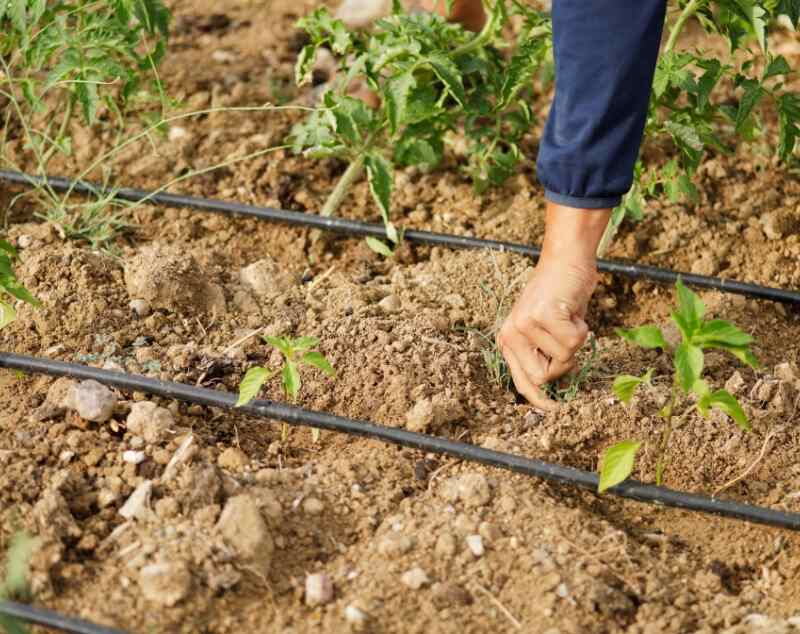
Water is a precious resource, and using it wisely is essential, especially during the dry summer. So if you’re looking to build a drought-tolerant landscape, efficient irrigation systems are an absolute must.
Traditional sprinklers may get the job done, but there are more efficient ways to deliver water to your plants. In fact, they often waste a lot of water through overspray, mist, and evaporation. That’s where drip irrigation systems come in.
Drip irrigation delivers water directly to your plants or grassroots using a network of tubes or pipes with emitters. These systems not only provide water efficiently, but they can also reduce the risk of overwatering, which leads to root rot and other issues. For lawns, there is also an option to use subsurface irrigation systems.
5. Consider Xeriscaping
Xeriscaping is a landscaping technique that has become increasingly popular in regions like the Dallas-Fort Worth metroplex. It involves using a combination of:
- Native and drought-tolerant plants
- Water-efficient irrigation systems
- Sand
- Rocks
- Mulch
- Hardscape features
Overall, xeriscaping is a smart choice for homeowners in Plano, TX who want a beautiful, sustainable outdoor space requiring minimal maintenance. Xeriscaping costs between $10,000 and $19,000 for a 1,000 to 2,000-square-foot area, including materials and labor costs.
6. Harvest Rainwater
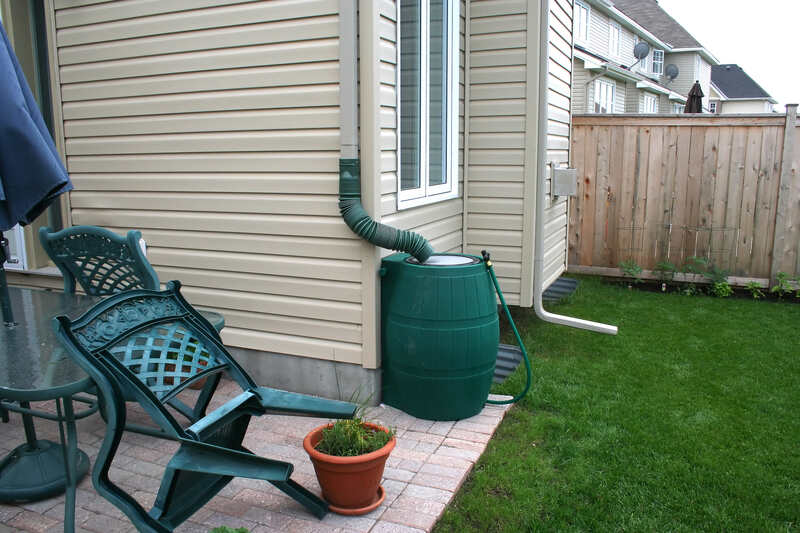
Harvesting rainwater is a smart move for anyone looking to build a drought-tolerant landscape in Plano. Rainwater is a valuable resource that can be used to water plants, irrigate your lawn, and clean sidewalks, reducing your reliance on the local water supply. One easy way to collect rainwater is to build a rain barrel station into your landscape design.
This involves setting up one or more rain barrels to capture rainwater as it falls. They are available in various sizes and styles and can be customized to fit your specific needs and preferences. You can even disguise your rain barrel with rocks and plants to blend it in, creating a visually appealing and functional feature.
One inch of rainfall from an average roof fills a 55-gallon drum. You can even have a professional attach hoses to the drum and use it in your drip irrigation system or a water feature.
7. Use Mulch
Mulch is an essential component of a drought-tolerant landscape. It is a layer of organic or inorganic material spread over the soil around plants, shrubs, trees, and lawns. Mulch can be made from a variety of materials, including:
- Grass clippings
- Shredded leaves
- Wood chips
- Straw
- Pine needles
- Rubber
One of the main benefits of using mulch in a hot area that doesn’t get much rain is that it helps to retain moisture in the soil. By creating a barrier between the soil and the sun, mulch helps reduce water evaporation and keep the soil moist, even during drought. Mulch can also help keep the soil cool, reducing plant stress and helping them thrive.
Pro Tip: Mulch can improve your lawn in other ways, including weed suppression, preventing soil erosion, and adding nutrients to the soil.
8. Get Creative With Hardscapes
Hardscapes can be a valuable and creative addition to your outdoor space when building a drought-tolerant landscape in Plano, TX. Hardscapes refer to any non-living element of a landscape, including rocks, pavers, stone walls, and other features.
The great thing about hardscapes is that they are 100% drought-tolerant and offer a durable and sustainable way to add curb appeal to your home without relying on water. Consider investing in:
- A stone or concrete patio
- A dining space with an outdoor kitchen and outdoor furniture
- A fire pit for a cozy spot during cool evenings
- Hammocks and sitting areas
- Stone walls for texture and visual interest
- A pergola or awning for shade and comfort
9. Install a Rock Garden
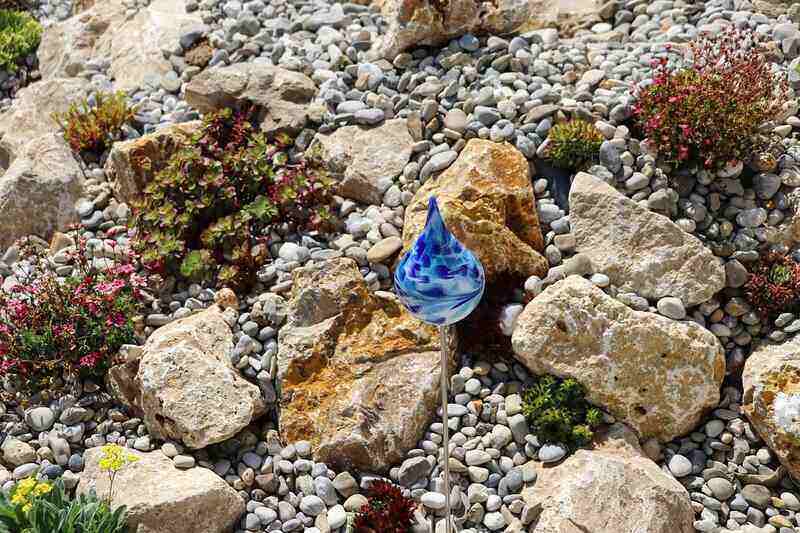
A rock garden is like a tiny mountain range in your own backyard, without all the hiking and sweat. Unlike traditional gardens that require regular watering, rock gardens don’t need any water at all, making them an ideal choice for water conservation and sustainability.
You can start by gathering stones from your yard or nearby areas and use them to create an attractive and functional landscape feature that requires minimal maintenance. You can even use rocks to accentuate the native perennial plants or other features you have installed in your landscape design or create a Zen space for meditation.
Pro Tip: If you don’t have rocks you can use, choose local rocks that can be easily delivered. Shipping costs can add up, so selecting readily available options in your area can help keep your project on budget.
FAQ About Drought-Tolerant Landscaping
There are several excellent options when selecting drought-tolerant trees for Texas, particularly in the North Texas region where Plano is located. Some of the best drought-tolerant trees for this area include:
● Cedar elm
● Crepe myrtle
● Bur oak
● Texas buckeye
● Desert willow
If you’re looking for the most drought-tolerant and low-maintenance grass type for Texas, buffalograss is the way to go. It requires very little water and can maintain its green color even during drought. It is also resistant to pests and diseases, making it ideal for low-maintenance lawn care.
Another great advantage of buffalograss is that it doesn’t need regular mowing since it has a really slow growth rate and only grows up to 6 inches.
There are several drought-tolerant shrubs to consider in Texas for your landscape. Some of the best of the region include:
Zexmenia
● Yellow bells (Esperanza)
● Texas sage
● Texas lantana
Bring in the Lawn Care Pros
By incorporating native plants, efficient irrigation systems, and hardscaping features, you can reduce water usage and create a low-maintenance, functional, and attractive landscape in Plano.
So why not take the first step toward creating a beautiful, sustainable outdoor space? Contact a professional landscaping service in Plano today and start enjoying the benefits of a drought-tolerant landscape for years to come.
Main Image Credit: Brent Eckley / Flickr / CC BY 2.0
